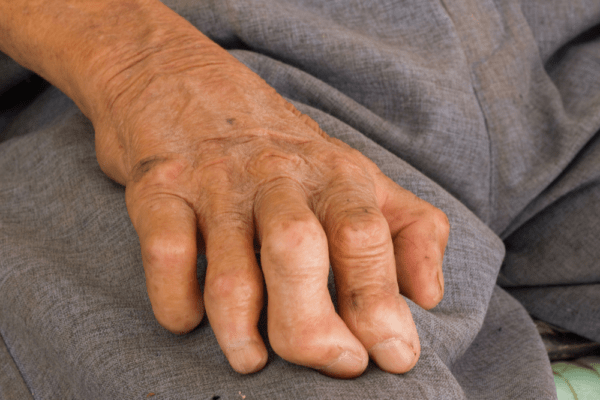Named after its discoverer, Dr. Daniel Elmer Salmon, salmonellosis is an infection caused by the bacteria Salmonella. A foodborne illness, salmonella is one of the most frequently reported illnesses in the United States.
Salmonella is a group of bacteria that resides in the intestinal tracts of animals, including birds, and people. People most often get infected by eating food contaminated by animal feces, which can cause diarrhoea, abdominal pain, fever, vomiting, bleeding in stool and nausea. Raw or undercooked animal source foods (including beef, fish, poultry, eggs and dairy) are often the origin of salmonella. However, any food may become contaminated. Symptoms of salmonella poisoning, or salmonellosis, develop 12 to 72 hours after exposure and may last anywhere between 2 and 7 days.
While most people get better without any medical treatment, Salmonella can be a deadly threat to those with weakened immune systems, infants and young children, as well as older people.
Listed below are more such things you need to know about salmonella and few tips on how you can avoid getting the infection.
Salmonella Isn’t Just Found on Meat and Eggs
It’s a common misconception that you can get Salmonella only by consuming eggs and meats. The bacteria live in the intestines of animals, so anything that could be exposed to the feces of these animals can be at risk of salmonella contamination.
Some outbreaks around the world have not involved meat at all but instead have been associated with plants, and plant-based foods such as peanuts, spices, and even fruit-based candy. Unpasteurized foods, including unpasteurized milk, are also a risk.
Salmonella Infection can Spread from Person to Person
The bacteria can easily be transmitted from person to person via fecal oral transmission. However, person-to-person transmission is generally rare. To get infected, you would actually have to ingest the salmonella, and that’s usually from the feces of an infected animal, or if you’ve consumed something that was contaminated with salmonella.
Pets can Also Carry the Infection
Pets can be carriers of the salmonella bacteria but might not show any symptoms. Pets usually become infected with salmonella from eating pet food or drinking water contaminated with the bacteria.
Dogs can transmit the bacteria through their stools and saliva as the bacteria lives in their intestinal tract. They can also transmit the bacteria to you or others through their kisses and licks. To avoid infection, you should thoroughly wash their hands after picking up pets’ feces and cleaning their crates and litter boxes (for cat owners). You should also try to keep your pets away from areas where you normally prepare or eat food and keep surfaces in your home clean.
Other animals that are known to spread salmonella include turtles and lizards, chicken, ducks and geese, mice and rats, and farm animals, like goats, cows, and pigs.
Salmonella Is More Common during Summer
Bacteria tends to grow when temperature rises and this gives infections like salmonella a perfect environment to thrive.
To help avoid the risk, keep perishable food, including dairy, eggs, meats, and fresh produce, refrigerated or frozen. Also, keep in mind to wrap and keep leftovers in a container in the fridge within two hours of preparing it.
Salmonella Can Lead to Arthritis or IBS
Rective arthritis is a painful inflammatory joint condition. According to the American College of Rheumatology, reactive arthritis occurs in reaction to an infection by certain bacteria in the genitals (such as chlamydia) or the bowel (such as salmonella). It’s the antigen that’s in the salmonella that’s impacting your joints.
Another, more serious salmonella-related complications concern itself around post-infectious irritable bowel syndrome (IBS). While salmonella induced arthritis isn’t a long-term condition, post-infectious (IBS) can last for days, weeks, and even months.
There are Multiple Strains of the Bacteria
Salmonella exists in more than one strain of the bacteria. According to the CDC, more than 2,500 group or serotypes of salmonella have been identified — 100 of which account for most human infections. The two most common strain types that cause illness are typhoidal salmonella, also known as Salmonella Typhi, and nontyphoidal salmonella.
Typhoid fever is a life-threatening illness caused by Salmonella enterica serotype Typhi and Salmonella enterica serotype Paratyphi. Symptoms of typhoid and paratyphoid fever include fever, stomach pain, diarrhea, constipation, headache, loss of appetite, and weakness.
Tips to Prevent Salmonella
- Thoroughly cook food including poultry, ground beef and eggs. Ground meats must be cooked to 160 degrees. Poultry should be cooked to 165 degrees. Cook eggs until they are 160 degrees (stay away from over-easy, runny yolks).
- Avoid cross-contamination of food. Keep uncooked meats separate from other food.
- Wash hands, kitchen surfaces and utensils with soap and water immediately after they have been in contact with raw meat or poultry. Also, always wash your hands immediately after handling meat, even if the animal is healthy.
- Put foods in the refrigerator promptly. Proper storage and handling of food help prevent the growth of Salmonella.
- Do not eat or consume raw or undercooked meat or eggs and raw or unpasteurized dairy products.
- In a childcare setting, wash hands with soap after changing diapers. Keep in mind the dispose of stool and soiled diapers in a sanitary manner as well.
Know When to Call the Doctor
While salmonella infection clears away on its own within a few days, if symptoms experienced persist or get worse, contact your medical health professional. Call your doctor in cases especially involving infants, young children, or the elderly.



